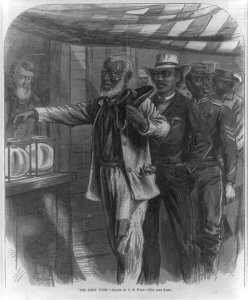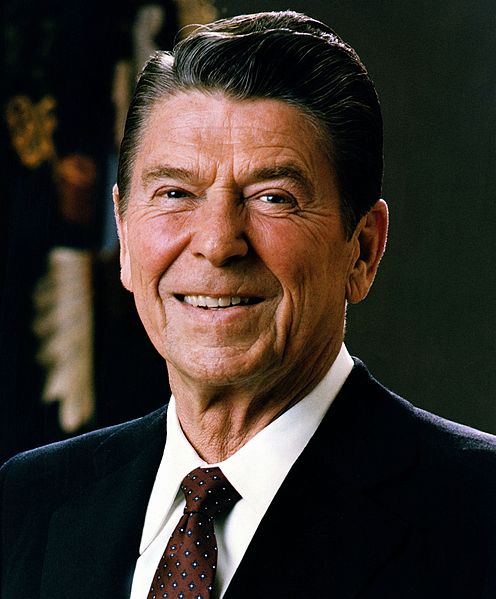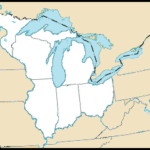The focus of this blog post will be for you to practice the skill of identifying changes and continuities throughout APUSH with one theme in mind: voting rights.
One of the skills that is super important for you to master for the APUSH exam is thinking across time periods. It’s not enough that you know when the War of 1812 was (hah! A little history humor for you) or why it happened. You need to know how that event is similar to, but also differs from, events that came before it (like the War of Independence) and those that came after (like the Mexican-American War).
This means you need to be able to recognize change and continuity throughout US History. Ready to dive in? Let’s go!
A Brief History of Voting Rights
With reports of U.S. citizens turning out to vote at depressing lows, it can be hard for present day APUSH students to recognize that:
- Voting was not considered a right until the ideas of representative government took hold, and individuals were not seen as subjects of a monarch, but citizens of a state;
- The notion of citizenship had to be negotiated (and sometimes, violently negotiated) in order for us to have a more expansive idea of who can vote; and
- Even today, many individuals within the United States do not have the right to vote.
With these three concepts in mind, I will take you on a whirlwind history that highlights the following four periods:
- Expansion of the right to vote for white, male property owners at the founding of the country
- The establishment of the 15th Amendment, and the Voting Rights Act of 1965 that made the 15th Amendment protections real
- The establishment of the 19th Amendment
APUSH Themes: Voting Rights
1. Initial Expansion of the Right to Vote
As I mentioned earlier, voting, citizenship, and individual rights were coming into vogue when the United States was founded (you can thank the Enlightenment philosophers, in large part, for those ideas). The idea that individuals had the right to choose their government was a key part of the Declaration of Independence. But there was just one problem with all of these individual rights: who would count as an individual?
Prior to the Enlightenment, the unit of measurement that mattered for purposes of government administration was much larger than an individual; generally, a town, village, or community would be taxed, not an individual. So, we see a shift towards thinking about representative government, and a need for individual voices to be heard. But the cacophony of every individual voice was, perhaps, untenable to most lawmakers. See this excerpt from Federalist 10, written by James Madison, regarding the dangers of too many individual voices to a well-functioning government:
- From this view of the subject it may be concluded that a pure democracy, by which I mean a society consisting of a small number of citizens, who assemble and administer the government in person, can admit of no cure for the mischiefs of faction. A common passion or interest will, in almost every case, be felt by a majority of the whole; a communication and concert result from the form of government itself; and there is nothing to check the inducements to sacrifice the weaker party or an obnoxious individual. Hence it is that such democracies have ever been spectacles of turbulence and contention…A republic, by which I mean a government in which the scheme of representation takes place, opens a different prospect, and promises the cure for which we are seeking.
(Source: University of Groningen)
And so, as the fledgling United States gained its footing, voting rights applied only to heads of household recognized by the government: white, male, property-owning individuals.
2. The Establishment of the 15th Amendment

Source: “The First Vote” by A.R. Ward (1867). Library of Congress.
We know, however, that this republican government could not solve all problems among factions. There was one issue that was too great, too central to the very idea of the United States that a war broke out between opposing sides: that is, of course, the issue of slavery.
When the Union won the Civil War, the Reconstruction Amendments (amendments 13-15) were proposed (and ratified). They were a means of establishing rights of citizenship to formerly enslaved individuals, and voting rights to the men (not women; not yet).
The first section of the 15th Amendment reads as follows:
-
The right of citizens of the United States to vote shall not be denied or abridged by the United States or by any State on account of race, color, or previous condition of servitude.
Source: The Library of Congress
However, the amendment was not enough to guarantee black Americans the right to vote. The onslaught of Jim Crow Era laws and policies, grandfather clauses, poll taxes and tests, and outright intimidation and violence kept black people away. It was only through Civil Rights Era legislation – and the Voting Rights Act of 1965 in particular – that the 15th Amendment was actually put into effect.
3. The Establishment of the 19th Amendment
As I have hopefully made clear, the founding of the United States – and even the 15th Amendment that was meant to expand voting rights – included men, and men only.
We have the 19th Amendment, and the suffragettes who made that amendment possible, to thank.
Many suffragettes (suffrage means the right to vote, so a suffragette was a woman seeking the right to vote for herself and others of her sex) got their activist start during the abolition movement prior to and during the Civil War. In 1848, at the Seneca Falls Convention, a group of mostly women declared the following:
- We hold these truths to be self-evident: that all men and women are created equal; that they are endowed by their Creator with certain inalienable rights; that among these are life, liberty, and the pursuit of happiness; that to secure these rights governments are instituted, deriving their just powers from the consent of the governed. Whenever any form of government becomes destructive of these ends, it is the right of those who suffer from it to refuse allegiance to it, and to insist upon the institution of a new government, laying its foundation on such principles, and organizing its powers in such form, as to them shall seem most likely to effect their safety and happiness.
Source: Declaration of Sentiments
In a not so subtle dig at the Declaration of Independence, these women called out the hypocrisy of patriarchy. However, women would not receive the right to vote until 1920 with the passage of the 19th Amendment.
Recognizing Change and Continuity
There are plenty of ways to recognize change and continuity throughout these events. The following table provides some starting points for you to think about.
| Change | Continuity |
|---|---|
| Expansion of voting rights to multiple races and sexes | Those groups that were initially left out had to petition the founding documents in order to get those expanded rights |
| Violence was sometimes necessary to expand these rights | The language of individual rights remained the same |
And there are many other ways to think about change and continuity with voting rights throughout United States history! Want to talk through your ideas? Start a thread in the comment section below!
What other resources can I use to learn about APUSH Themes: Voting Rights?
Books
Give Us the Ballot, by Ari Berman.
Videos
Crash Course
History Channel




